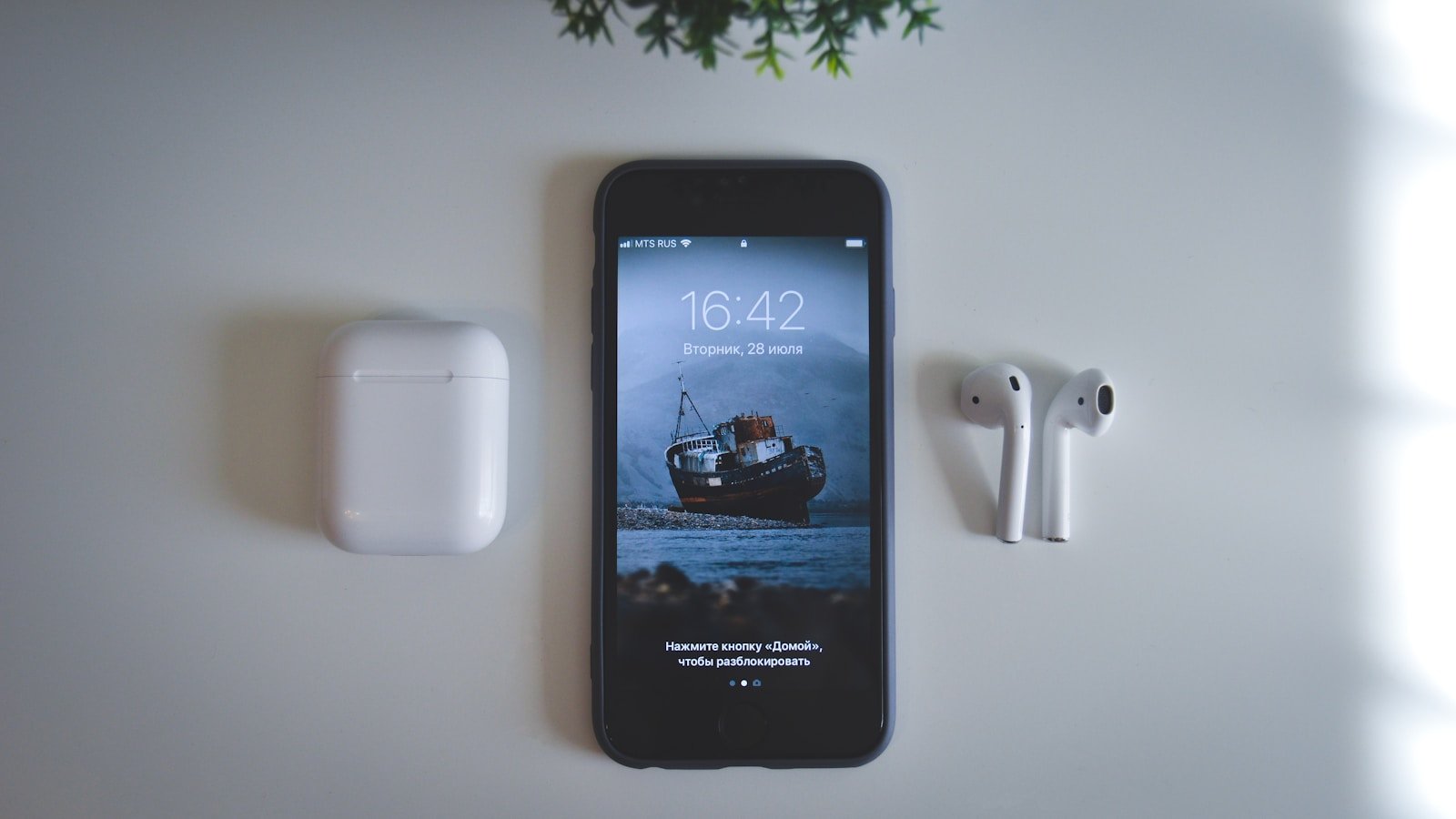Connecting your AirPods to your iPhone is a simple process that takes just a few moments. Whether you have the standard AirPods, AirPods Pro, or AirPods Max, the pairing process is designed to be seamless and user-friendly. To connect your AirPods to your iPhone, simply open the charging case near your unlocked iPhone and follow the on-screen instructions that appear.
Many users don’t realize that once their AirPods are paired with one Apple device, they automatically connect to other Apple devices using the same Apple ID. This means you can switch from listening on your iPhone to your iPad or Mac without going through the pairing process again. The automatic switching feature saves time and makes the AirPods experience more convenient.
How to Connect AirPods to iPhone (2025 Guide)
Apple has made pairing AirPods with iPhones nearly effortless. Whether you’re setting them up for the first time or reconnecting after switching devices, here’s the step-by-step guide.
1. Before You Start
- Make sure your iPhone is updated to the latest iOS version.
- Charge your AirPods case and ensure the earbuds are inside.
- Turn on Bluetooth on your iPhone:
- Go to Settings > Bluetooth → toggle On.
2. First-Time Setup (New AirPods)
- Unlock your iPhone and keep it on the Home Screen.
- Open the AirPods case (with the AirPods inside) and hold it next to your iPhone.
- A setup animation will appear on your screen.
- Tap Connect.
- Follow the on-screen instructions:
- If you have AirPods Pro or AirPods 4, you may be guided through features like Adaptive Audio, Noise Control, or Personalized Spatial Audio.
- If you haven’t set up Siri, you’ll be prompted to do so.
- Tap Done — your AirPods are now paired.
3. Reconnecting AirPods (Already Paired Before)
- If your AirPods were paired with your Apple ID, they’ll automatically reconnect when you open the case near your iPhone.
- If they don’t connect:
- Go to Settings > Bluetooth.
- Find your AirPods in the list and tap them.
4. Manual Pairing (If Automatic Setup Fails)
- Put your AirPods in the case and open the lid.
- Press and hold the setup button on the back of the case until the light flashes white.
- On your iPhone, go to Settings > Bluetooth.
- Select your AirPods from the list.
5. Managing AirPods Settings
Once connected, you can customize features:
- Go to Settings > [Your AirPods Name].
- Options include:
- Noise Control (Active Noise Cancellation, Transparency, Adaptive Audio).
- Spatial Audio setup.
- Automatic Ear Detection toggle.
- Double-tap or press-and-hold controls customization.
6. Troubleshooting Tips
- AirPods not showing up? → Reset them by holding the case button until the amber → white flash cycle.
- Connection drops? → Forget the device in Bluetooth settings and re-pair.
- One earbud not working? → Clean the contacts and reseat it in the case.
✅ Bottom Line
Connecting AirPods to your iPhone in 2025 is fast and seamless thanks to Apple’s one-tap setup and iCloud device syncing. Once paired, your AirPods will work across all Apple devices linked to your Apple ID — no extra setup required.
Key Takeaways
- Opening the AirPods charging case near your iPhone triggers an automatic connection prompt for easy setup.
- AirPods can connect to multiple Apple devices that share the same Apple ID without additional pairing.
- Bluetooth settings on iPhone allow users to manually connect AirPods and troubleshoot connection issues when needed.
Setting Up Your AirPods with iPhone
Connecting AirPods to an iPhone is designed to be simple and quick. The process uses Apple’s seamless integration between devices to make pairing almost automatic, while allowing your AirPods to work across multiple Apple devices.
Initial Pairing Process
To connect AirPods to an iPhone for the first time, start by ensuring the iPhone has Bluetooth enabled. This can be done through the Settings app under the Bluetooth section.
With AirPods inside the charging case, open the lid and hold it close to the unlocked iPhone. A setup animation should appear on the iPhone screen within seconds.
Tap Connect on the screen when prompted. If using AirPods Pro or AirPods Pro 2, the setup will include additional instructions for features like Noise Cancellation.
For older AirPods models, press and hold the setup button on the back of the charging case until the status light flashes white. This indicates pairing mode is active.
The iPhone will display a confirmation when pairing is complete. AirPods will automatically connect to the iPhone whenever they’re removed from the case and placed in the user’s ears.
Connecting to Additional Apple Devices
Once AirPods are paired with an iPhone, they automatically set up with other Apple devices signed in with the same Apple ID through iCloud.
This means the AirPods will work with the user’s iPad, Mac, and Apple Watch without additional pairing steps. This feature requires iOS 10 or later on the iPhone.
To switch between devices, open the Control Center on the iOS device, long-press the audio card, and select the AirPods from the audio output list.
For Mac computers, click the volume icon in the menu bar and select the AirPods from the output device list.
The automatic switching feature allows AirPods to detect which device is playing audio and switch connection accordingly. For example, if a user stops watching a video on their iPhone and starts one on their iPad, the AirPods will connect to the iPad.
Troubleshooting Connection Issues
If AirPods won’t connect to an iPhone, start by checking if the devices are charged and Bluetooth is enabled on the iPhone. Low battery can prevent successful pairing.
Ensure the iPhone is running a compatible iOS version. AirPods require specific minimum iOS versions depending on the model.
Try placing the AirPods back in the case, closing the lid for 15 seconds, then opening it again near the iPhone.
If problems persist, go to Settings > Bluetooth, tap the “i” icon next to the AirPods, and select “Forget This Device.” Then attempt the pairing process again from the beginning.
For stubborn issues, reset the AirPods by placing them in the case, holding the setup button for about 15 seconds until the status light flashes amber, then white.
If connection problems continue, check for software updates on the iPhone or contact Apple’s tech support for additional troubleshooting steps.
Advanced AirPods Features and Controls
AirPods offer more than just basic connectivity with your iPhone. They come with several advanced features that enhance your listening experience and make controlling your audio more convenient.
Utilizing the Control Center
The Control Center provides quick access to AirPods controls without having to open Settings. To access it, swipe down from the top-right corner on newer iPhones or up from the bottom on older models.
Once open, press and hold the audio card to see expanded controls for your AirPods. Here you can:
- Switch between Noise Cancellation, Transparency, and Off modes (AirPods Pro models)
- Adjust volume levels directly
- Change audio output to different devices
- Access the Spatial Audio toggle for immersive sound
For AirPods 4, you can also check battery levels for both earbuds and the charging case from this menu. This makes monitoring battery life simple and convenient.
Voice Commands and ‘Hey Siri’
AirPods work seamlessly with Siri, allowing hands-free control of your audio experience. Simply say “Hey Siri“ followed by your command.
Common voice commands include:
- “Play my favorite playlist”
- “Skip this song”
- “Turn up the volume”
- “How much battery do my AirPods have?”
- “Call [contact name]”
For AirPods 4 and Pro models, the built-in sensors detect when you’re speaking, making Siri more responsive. This feature works even in noisy environments thanks to improved microphones and noise isolation technology.
Siri can also announce messages and calls through your AirPods. Enable this in Settings > Siri & Search > Announce Notifications.
Maintaining AirPods and AirPods Pro
Proper maintenance ensures your AirPods continue to perform at their best. Clean them regularly with a soft, dry, lint-free cloth. For stubborn dirt, lightly dampen the cloth with water.
Never use sharp objects or abrasive materials on AirPods. The speaker meshes are particularly delicate and can be damaged easily.
Charging habits also affect longevity. The case provides multiple charges, but avoid leaving it plugged in constantly. Instead, charge when the battery falls below 20%.
To check battery status, place your AirPods near your iPhone and open the case lid. A battery status card will appear on screen showing levels for both the AirPods and the charging case.
Store AirPods in their case when not in use to protect them from damage and extend battery life.
Frequently Asked Questions
Connecting AirPods to an iPhone can sometimes be tricky. Here are answers to common questions about pairing, troubleshooting, and managing your wireless earbuds.
How can I initiate pairing AirPods with my iPhone?
To pair AirPods with an iPhone, place them in their charging case and open the lid. Hold the case next to your unlocked iPhone. A setup animation should appear on your iPhone screen.
Tap “Connect” when prompted. If you don’t see the animation, press and hold the setup button on the back of the charging case until the status light flashes white.
Your AirPods will automatically connect to other Apple devices where you’re signed in with the same Apple ID.
What should I do if my AirPods won’t connect to my iPhone?
If AirPods won’t connect, first ensure they’re charged. Open and close the case lid to check the charging status light.
Check that Bluetooth is enabled on your iPhone. Go to Settings > Bluetooth and make sure it’s turned on.
Try forgetting the AirPods in Bluetooth settings and reconnecting them. Sometimes restarting your iPhone can also resolve connection issues.
What are the steps to connect AirPods Pro to an iPhone?
Connecting AirPods Pro follows the same process as regular AirPods. Place them in their case, open the lid, and hold them near your unlocked iPhone.
When the setup animation appears, tap “Connect” and follow the on-screen instructions. The process will guide you through testing the fit of your ear tips.
AirPods Pro will then be ready to use with your iPhone and other devices using your Apple ID.
How can I link AirPods to the ‘Find My iPhone’ feature?
AirPods automatically work with the Find My app when paired with your iPhone. There’s no separate setup process needed.
To locate your AirPods, open the Find My app, select the “Devices” tab, and tap on your AirPods. You’ll see their last known location on a map.
You can also play a sound to help find them if they’re nearby but out of sight.
What is the process for resetting AirPods to fix connectivity issues?
To reset AirPods, place them in their charging case and close the lid. Wait 15 seconds, then open the lid.
Press and hold the setup button on the back of the case for about 15 seconds until the status light flashes amber, then white.
After resetting, hold the case near your iPhone to reconnect and follow the on-screen instructions.
Is there a way to force a connection between AirPods and an iPhone?
There’s no official “force connect” feature, but you can manually connect AirPods through the Control Center. Swipe down from the top-right corner of your iPhone screen.
Tap the audio card in the upper-right section of Control Center, then select your AirPods from the audio output list.
If they’re still not connecting, try removing them from the case and placing them in your ears while near your iPhone.







